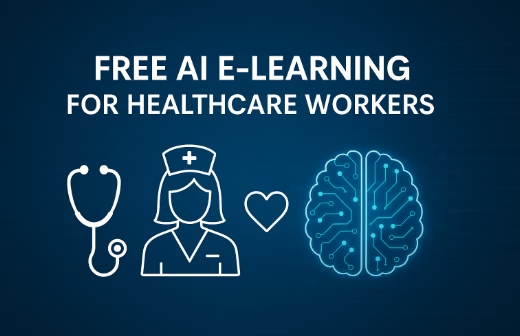Millions of healthcare workers rely on expert judgment every day, navigating increasingly complex cases and ever-growing workloads. What if you had a powerful, intelligent assistant that could significantly enhance diagnostic accuracy and efficiency? Enter the Microsoft AI Diagnostic Orchestrator (MAI-DxO) – an advanced system that diagnoses complex cases with up to 85% accuracy, compared to about 20% by unaided physicians. But is this groundbreaking innovation here to help doctors, or is it edging toward replacing them?
What Is the MAI-DxO?
Imagine a virtual “super-team” of highly specialized AI agents, each an expert in a different medical domain, collaborating and debating to arrive at the most accurate diagnosis. That’s essentially what the Microsoft AI Diagnostic Orchestrator is. Unlike single AI models, MAI-DxO is an advanced multi-agent “orchestrator” that simulates a panel of AI “doctors,” each with a different specialty.
It works by:
- Orchestrating Multiple AI Models: It integrates and leverages the strengths of various leading large language models (LLMs) from different providers like OpenAI (specifically, o3), Google (Gemini), Anthropic (Claude), Meta (Llama), and xAI (Grok). This “chain-of-debate” approach mimics how a multidisciplinary team of human specialists would consult and reach a consensus.
- Emulating Clinical Reasoning: The orchestrator is built to follow a structured process that mirrors the sequential diagnostic steps taken by human doctors. AI agents propose diagnoses, suggest necessary tests, and confer to reach a decision, simulating real-world clinical reasoning.
- Being Model-Agnostic: This means it’s not tied to a single AI model, allowing for flexibility and performance across various AI ecosystems. The highest accuracy observed was using OpenAI’s o3, achieving 85-85.5% on 304 challenging NEJM case studies.
Timeline & Development:
The journey of the Microsoft AI Diagnostic Orchestrator has been swift and strategic:
- Late 2024: Microsoft launched its dedicated AI-health unit under Mustafa Suleyman, assembling top talent from DeepMind and Google.
- Mid-2025 (Current Phase): The AI Diagnostic Orchestrator was unveiled and benchmarked in the Sequential Diagnosis Benchmark (SDBench) using real-world New England Journal of Medicine (NEJM) case records.
Key Results:
The initial findings for MAI-DxO are impressive:
- Accuracy: Achieved approximately 85% accuracy in diagnosing complex cases, significantly outperforming unaided human doctors who averaged around 20% accuracy under restricted conditions.
- Efficiency: Diagnoses were achieved with up to 20% fewer tests, leading to a reduction in both cost and the burden on healthcare systems.
What It Means for Healthcare Workers:
Microsoft emphasizes that AI, including MAI-DxO, is intended to augment human expertise and empathy, not replace healthcare professionals. Human input remains vital for empathy, judgment, and complex decision-making.
Promise:
- Faster, more accurate diagnoses for complex cases, especially those that typically challenge human clinicians.
- Reduced testing burden and cost by recommending more precise and efficient diagnostic pathways.
- Scalable support in understaffed environments, potentially easing the workload on overstretched medical teams.
Caution:
It’s crucial to understand the current stage of this technology:
- Not yet peer-reviewed or tested in clinical settings: The initial results are from lab benchmarks, and the system still lacks real-world validation and comprehensive safety data.
- Further Validation Required: Rigorous clinical trials and peer-reviewed publications are essential before any broad deployment.
Timeline & What’s Next:
Here’s a snapshot of the anticipated journey for MAI-DxO:
| Phase | Date | Details |
| Lab Test | June 2025 | NEJM benchmark results published. |
| Peer Review | Late 2025? | External scrutiny and validation by the scientific community pending. |
| Small-scale Trials | 2026 | Pilot programs in actual clinical settings to assess real-world performance and safety. |
| Integration | 2026–2027 | Deployment via Microsoft Bing and Copilot to support clinicians directly within their workflows. |
Your Takeaway:
If you’re a healthcare professional, this signals a future where AI acts as a sophisticated diagnostic partner – offering unparalleled insights while clinicians retain ultimate control.
- Now: Stay informed about these developments, watch for early trials, and consider how advanced tools like MAI-DxO could eventually fit into your practice.
- Soon: AI systems like the Diagnostic Orchestrator could become an integral part of routine workflows, significantly speeding up diagnoses, reducing unnecessary test utilization, and freeing you up for what truly matters: direct patient care and building meaningful connections.
Final Thoughts:
Microsoft’s MAI-DxO isn’t about replacing doctors – it’s about empowering them. It’s an incredibly impressive system, but it’s important to remember that it is still in its early stages. For now, healthcare workers remain at the helm – supported, not substituted, in the noble pursuit of patient well-being.



